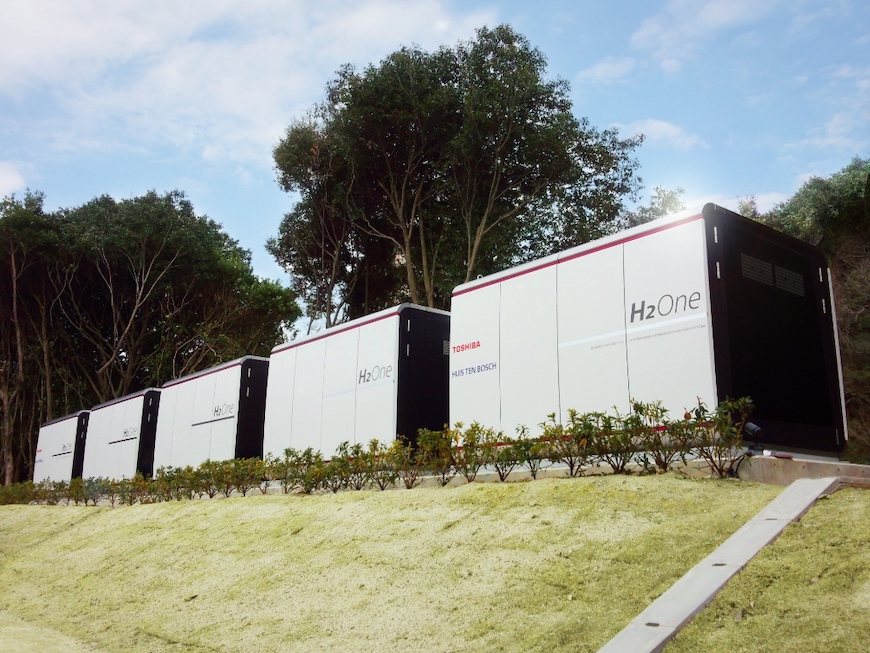Toshiba's H2One system becomes operational at Musashi-Mizonokuchi Station in Japan

Toshiba’s autonomous hydrogen energy system H2One has become operational at Musashi-Mizonokuchi Station on the JR Nambu Line in Kawasaki City, Japan.
H2One uses hydrogen generated with renewable energy and facilitates energy supply stability. It has been designed for use in regular day-to-day operations, in addition to acting as a back-up in situations where power supplies have been knocked out, such as natural disasters.
Toshiba Energy Systems & Solutions Company New Energy Solutions Project team manager Hiroyuki Ota said: “I am delighted that we have installed an H2One at a train station for the first time.
“I am sure use of the BCP H2One will save energy and raise environmental awareness among passengers using the station. Our goal is to help realise a low carbon economy where CO2-free electricity from hydrogen is widely used.”
The system will provide uninterrupted, off-grid energy during emergencies, which will be used to light part of the station concourse and also its lavatories.
H2One also produces hydrogen and generates electricity, which will help lower consumption of mains power. In addition, the system can produce and circulate hot water through the station’s benches during winter to warm them.
The new energy supply system offers a one-stop solution, from using renewable energy to producing and storing hydrogen.
Musashi-Mizonokuchi railway station is operated by East Japan Railway Company and is served by the Nambu Line. It is located approximately 12.7km from the terminus at Kawasaki Station.

